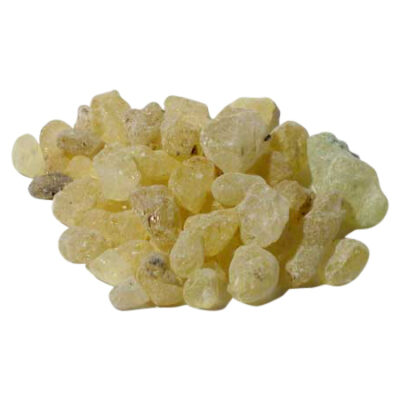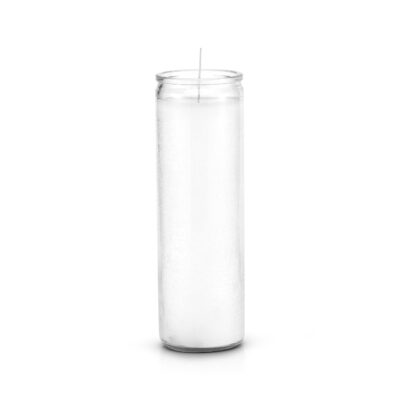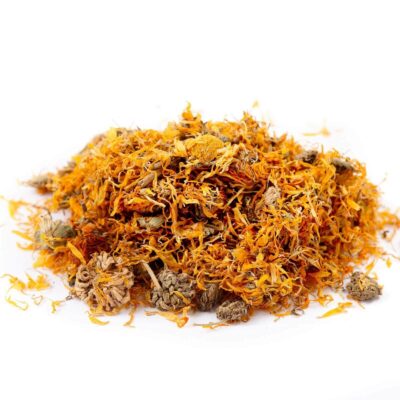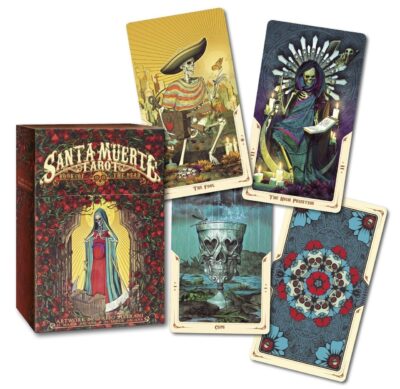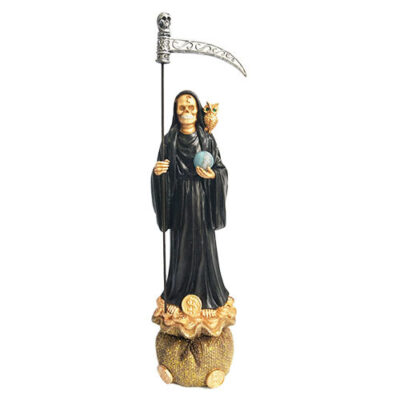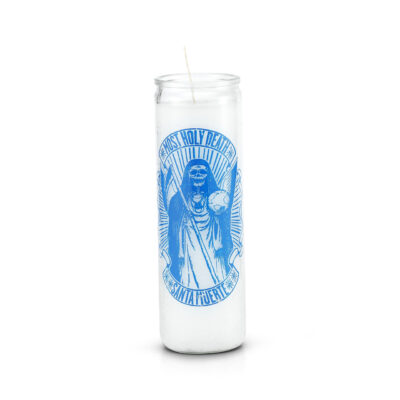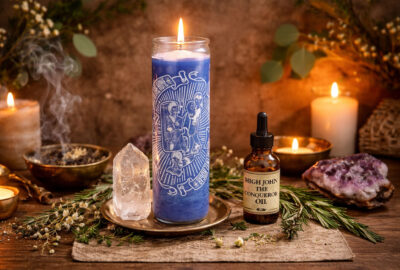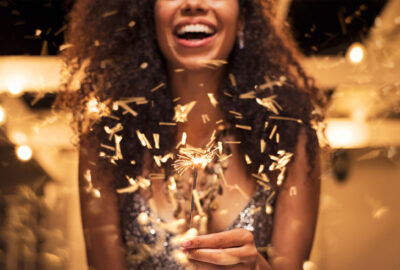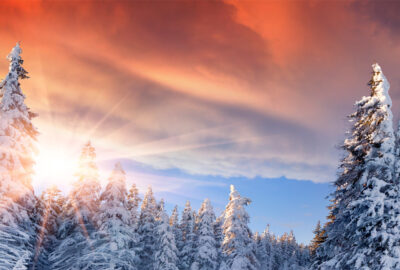
Celebrating El Dia de los Muertos
El Dia de los Muertos, or the Day of the Dead, has deep historical roots that stretch back long before the arrival of Spanish conquistadors in what is now Mexico. To provide a more comprehensive understanding of its origins, let's delve into the rich historical context of this vibrant and unique celebration.
The origins of el Dia de los Muertos can be traced to the indigenous civilizations of Mesoamerica, with the Aztec civilization playing a significant role. The Aztecs, along with other cultures like the Maya and the Nahua, had elaborate rituals and beliefs centered around death and the afterlife.
One of the most well-known aspects of Aztec beliefs was the notion of multiple realms of the afterlife. According to Aztec cosmology, the souls of the deceased embarked on a complex journey through different realms, ultimately reaching the final resting place called Mictlan, presided over by the deity Mictecacihuatl. To aid the souls on this journey, the Aztecs held elaborate ceremonies, offerings, and festivals dedicated to the dead.
The Aztecs celebrated a month-long festival known as Miccailhuitontli (the Little Feast of the Dead), which honored deceased children and departed adults. During this time, families would make offerings of food, flowers, and symbolic items at home altars and grave sites. These offerings were intended to provide sustenance for the souls of the deceased on their journey through the afterlife.
The Birth of Dia de los Muertos
Upon the arrival of the Spanish conquistadors, led by Hernán Cortés, to the shores of Mexico in the early 16th century, they encountered these indigenous beliefs and practices with a deep-rooted connection to the cycle of life and death. Eager to convert the native population to Christianity, the Spanish embarked on a mission to syncretize these deeply ingrained indigenous traditions with the principles of Catholicism.
This ambitious endeavor marked a pivotal moment in the history of cultural exchange and adaptation, resulting in a profound transformation of indigenous practices. The blending of indigenous rituals with Christian holidays, notably All Saints' Day on November 1st and All Souls' Day on November 2nd ushered in a new era of celebration that would become el Dia de los Muertos as we know it today.
The Spanish, in a strategic move, repositioned the celebration from its original summer date to align harmoniously with the Catholic holidays, effectively melding the indigenous and Christian elements into a vibrant and enduring tradition that transcends time and continues to unite communities in remembrance and celebration.

A sugar skull, or "calavera de azúcar" in Spanish, is a delightful confection that stands as one of the most iconic symbols of the Day of the Dead.
The Day of the Dead Today
Over the course of numerous centuries, el Dia de los Muertos has undergone a profound and multifaceted evolution, adapting itself to the changing tides of culture and society. Throughout this extended period, it has absorbed a myriad of diverse influences, drawing inspiration from European customs and embracing contemporary interpretations, yet remarkably retaining its fundamental essence, which is firmly rooted in the timeless concept of paying homage to and preserving the memory of beloved departed individuals.
In the present day, el Dia de los Muertos has transcended its historical boundaries and taken root not only in the hearts of Mexicans but also in communities across the globe. This expansion has propelled it into a prominent position as a symbol of Mexican culture and identity, celebrated with enthusiasm and reverence. It is widely acknowledged for its resplendent and intricate artwork, characterized by the meticulous creation of sugar skulls and the vibrant marigold adornments that have become emblematic of this cherished tradition.
Moreover, this festive occasion holds a poignant significance, serving as a poignant reminder of the enduring connection between the realms of the living and the departed. It stands as a testament to the resilience of indigenous traditions that have withstood the test of time and remained steadfast in the face of the cultural impact of colonialism. El Dia de los Muertos has evolved, expanded, and embraced new influences while preserving its core values, ultimately emerging as a profound and enduring celebration that beautifully encapsulates the spirit of remembrance and the rich tapestry of Mexican and Latin American heritage.
From Palermo to Mexico: The History of Sugar Skulls
A sugar skull, or "calavera de azúcar" in Spanish, is a delightful and intricate confection that stands as one of the most iconic symbols of the Day of the Dead. These sweet creations trace their origins to a fascinating blend of history and tradition that bridges continents and cultures.
The making of sugar figures can be traced back to Palermo, Italy, where figurines were made out of sugar as religious decorations. As far back as the mid-18th century, Mexicans began combining Spanish Catholic beliefs with their native Mesoamerican rituals. During this time period, sugar skulls became a popular representation of el Dia de los Muertos. By the mid-19th century, it was common for skulls to bear the name of the recipient across the forehead.
Today, the image of the sugar skull is the most widely recognized icon associated with the Day of the Dead. These beautifully painted skulls are full of intricate designs and bright colors. The calacas and calaveras (skeletons and skulls) are created in all shapes and sizes during the holiday: as parade masks, dolls, and various types of candies. Each unique design represents a departed soul.
In recent years, the traditions of the Day of the Dead have spread into North America, particularly into communities with large Mexican and Latin American populations. As a result, over the last decade, the image of the sugar skull has gained popularity in the United States. Many Halloween decorations and costumes now feature the icon and the festive image has largely replaced the conventional spooky skulls of the past.
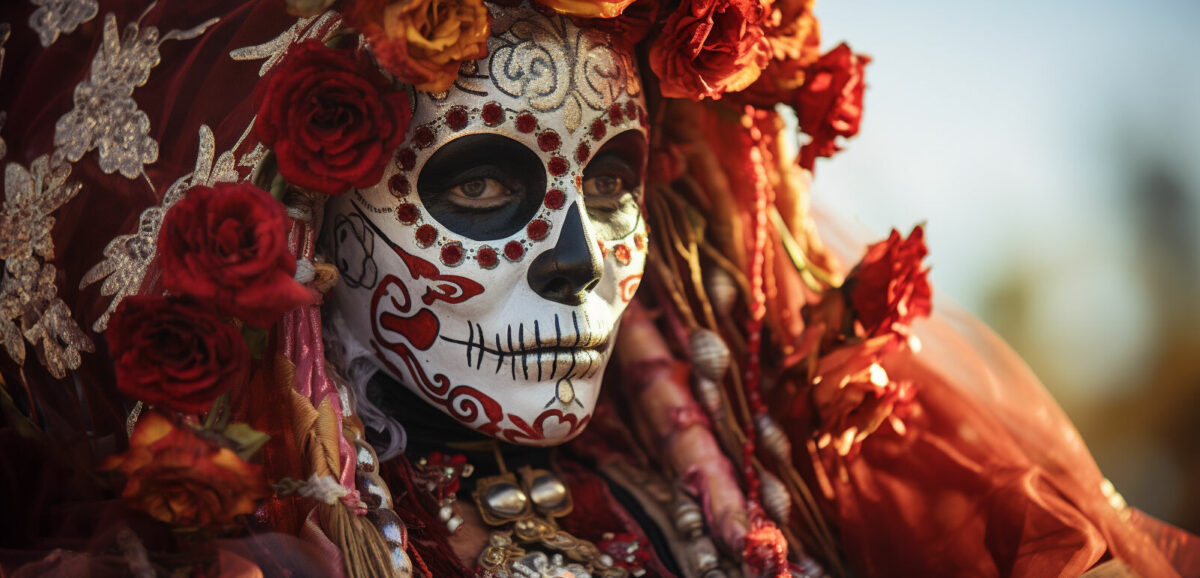
Santisima Muerte has garnered a significant following and plays a role in the broader context of Dia de los Muertos.
Santisima Muerte and Her Connection to Dia de los Muertos
In the intricate tapestry of Mexican spirituality and religious beliefs, Santisima Muerte, or "Most Holy Death," occupies a unique and controversial place. Although not an official figure in the Catholic Church, Santisima Muerte has garnered a significant following and plays a role in the broader context of Dia de los Muertos, the Day of the Dead.
Santisima Muerte is often depicted as a skeletal figure, similar to the iconic calacas and calaveras associated with Dia de los Muertos. However, her veneration is distinct. While Dia de los Muertos is primarily a time to honor deceased loved ones and celebrate their lives, Santisima Muerte represents a more complex blend of indigenous, folk, and Catholic beliefs.
During Dia de los Muertos, you may encounter altars and offerings dedicated to Santisima Muerte, especially in regions where her veneration is prevalent. This underscores the diverse and multifaceted nature of the Day of the Dead, where various spiritual beliefs converge and coexist.
Celebrating the Day of the Dead
Much planning goes into the festivities that take place during this two-day remembrance. Families put a lot of thought into the foods, beverages, and other offerings that they present in honor of their loved ones. There are many recipes that are traditionally prepared during el Dia de los Muertos.
Pan de Muerto is the bread that is prepared and eaten during the Day of the Dead. It is the food that is most closely associated with the holiday and is a vital part of each family's altar. It is most commonly a round, sweet bread that is flavored with orange blossoms and decorated with shapes suggestive of bones, often either sprinkled with sugar or sesame seeds. In the Catholic religion, the bread signifies the body of Christ, which adds to the importance of bread for this holiday.
Mole is an extremely intricate and time-consuming Mexican dish featuring anywhere from twenty to fifty ingredients. The complexity of the recipe makes it the perfect offering to represent the importance of the holiday. Often served with enchiladas, meats, and vegetables, this rich sauce typically contains a mixture of chiles, nuts, seeds, and vegetables.
Calabaza en Tacha is a candied pumpkin recipe made from sugar pumpkins. Slices of the pumpkin are cooked in a syrup made from piloncillo (a raw, unrefined sugar) and cinnamon. Once cool, the dish is most often served as a dessert.
Champurrado is a traditional cornstarch-based Mexican and Central American hot drink. Made with Mexican chocolate, milk, and masa for thickening, it is thicker than most hot chocolate. Champurrado is served to warm the souls that have made the journey back to the land of the living.
Marigolds are prominently displayed during el Dia de Los Muertos festivities. These fragrant flowers are a symbol of death, referred to as the 'flower of the dead.' Flowers represent the fragility of life and it is believed that the vibrant color and scent of the marigolds guide the spirits to their altars. The beautiful yellow and orange blossoms are fashioned into elaborate arches for display on graves. In some instances, people leave a trail of marigolds from their front door to their loved one's grave, so that the deceased may easily find their way back home again.
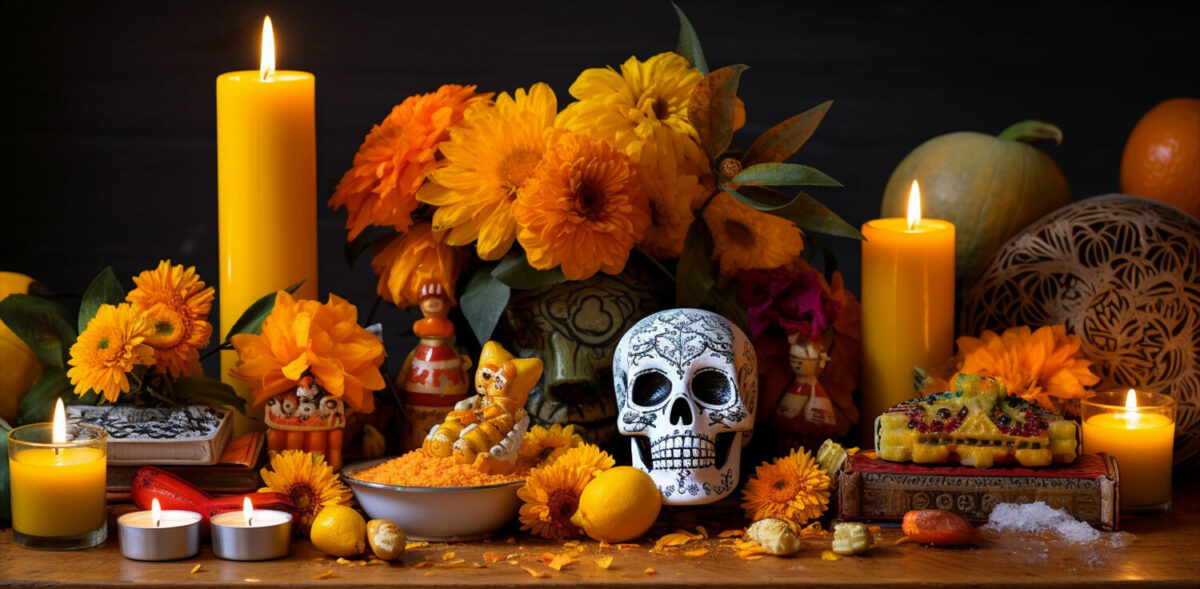
The Day of the Dead is a time to honor and remember loved ones who have passed away.
A Dia de los Muertos Candlelight Remembrance Ritual
The Day of the Dead is a time to honor and remember loved ones who have passed away, celebrating their lives and the enduring connection between the living and the dead. This "Dia de los Muertos Candlelight Remembrance Ritual" is a meaningful way to pay tribute to your ancestors and departed loved ones. Using readily available ritual items, you can create a beautiful and contemplative space to connect with their spirits on this special day. Here is what you will need to gather to perform this solemn ritual:
- A white candle
- A small glass of water
- Marigold flowers
- A framed photograph or an object that belonged to the deceased
- Copal incense or any other preferred incense
- A small bowl or plate
- A piece of papel picado (traditional Mexican paper banner)
- A small plate of their favorite food or snack
- A glass of their preferred beverage
Create a serene and sacred space for your Dia de los Muertos observance. Begin by selecting a quiet and comfortable location, and then drape a pristine white or ivory cloth over the chosen surface. This cloth symbolizes purity and the connection between the mortal world and the spiritual realm. At the center of this sacred space, position a framed photograph of your beloved departed or an object that once belonged to them. This will serve as the focal point for your connection with their spirit, anchoring your thoughts and memories.
To invoke the presence of the spirits and guide them to the altar, if available, delicately scatter fresh marigold flowers around the photograph or object. The marigolds, with their vibrant hues and fragrant essence, are believed to be guiding beacons for the souls of the departed. Illuminate the altar with a white or ivory candle, lighting it to symbolize the eternal light of the soul and to lead the spirits back to the realm of the living.
Provide sustenance for the visiting spirits by placing a small glass of water on the altar, quenching their thirst after their journey from the afterlife. As you honor your loved one's memory, light copal incense, or your preferred incense, let the fragrant smoke symbolize purification and the presence of the divine.
To nourish the spirits further, set a small plate of their favorite food or snack alongside a glass of their preferred beverage on the altar. This offering is a heartfelt gesture to ensure that their spiritual presence is well-fed during their visit. Hang a piece of papel picado, a traditional Mexican paper banner adorned with intricate designs, above the altar to infuse the space with a festive and decorative ambiance.
Spend a quiet moment in reflection and contemplation, closing your eyes and inviting the presence of your loved one into your heart. Speak to them sincerely, sharing cherished memories, love, and gratitude. Envision their spirit gracing the altar with their presence, bridging the realms of the living and the deceased.
Conclude the ritual with a candlelight vigil, sitting or meditating in front of the altar while gazing at the flame. Let the soft and flickering candlelight create a serene and introspective atmosphere, facilitating a deep connection with the departed.
When you feel the time is right, express your heartfelt gratitude to your loved one for their presence and their visit. Gently blow out the candle, watching as the smoke from the extinguished flame rises, carrying their spirit back to the peaceful realm of the afterlife.
This Dia de los Muertos Candlelight Remembrance Ritual is a heartfelt way to commemorate the lives of your ancestors and loved ones, fostering a sense of connection and remembrance that is at the heart of this beautiful tradition.
Dia de los Muertos commemorates the lives of the deceased with food, drink, parties, and activities that the dead enjoyed during their lives. The holiday recognizes death as a natural part of the circle of life, a piece of the cycle, intertwined with birth, childhood, and adulthood. On el Dia de los Muertos, the dead are reunited as part of the community, awakened from their eternal sleep to share memories and celebrations with their loved ones.
